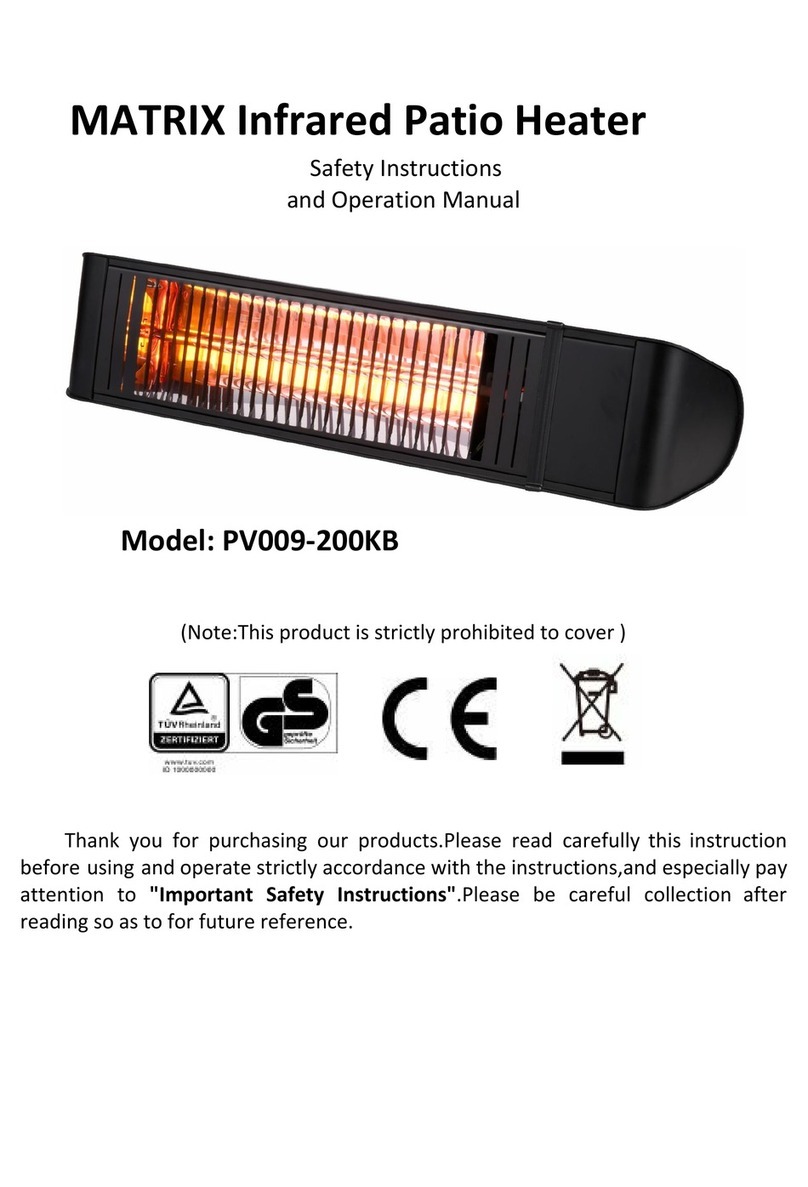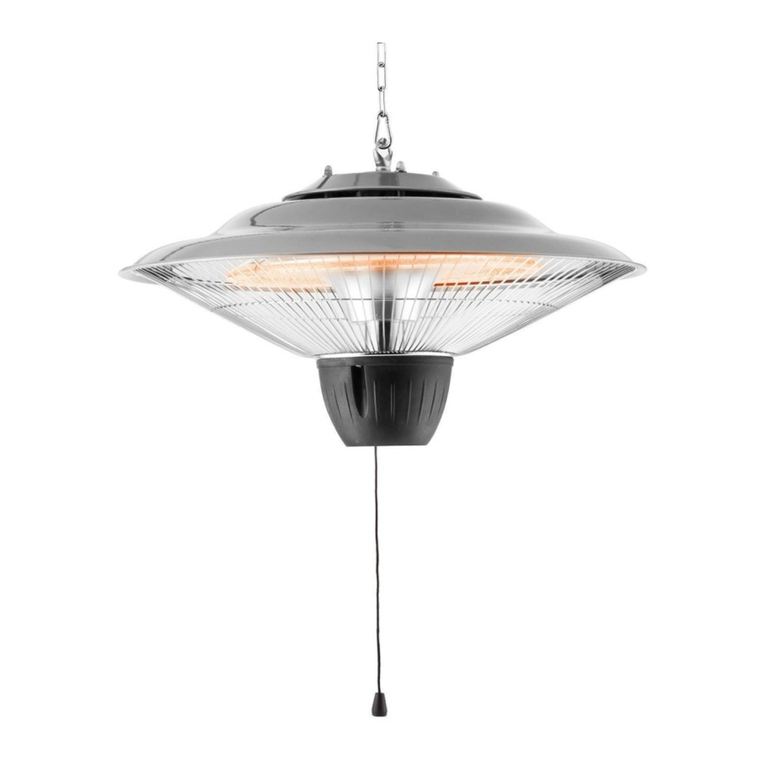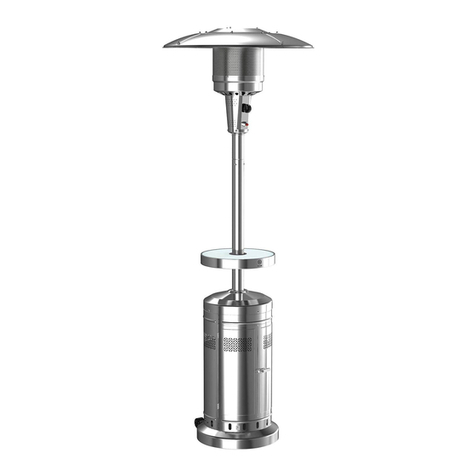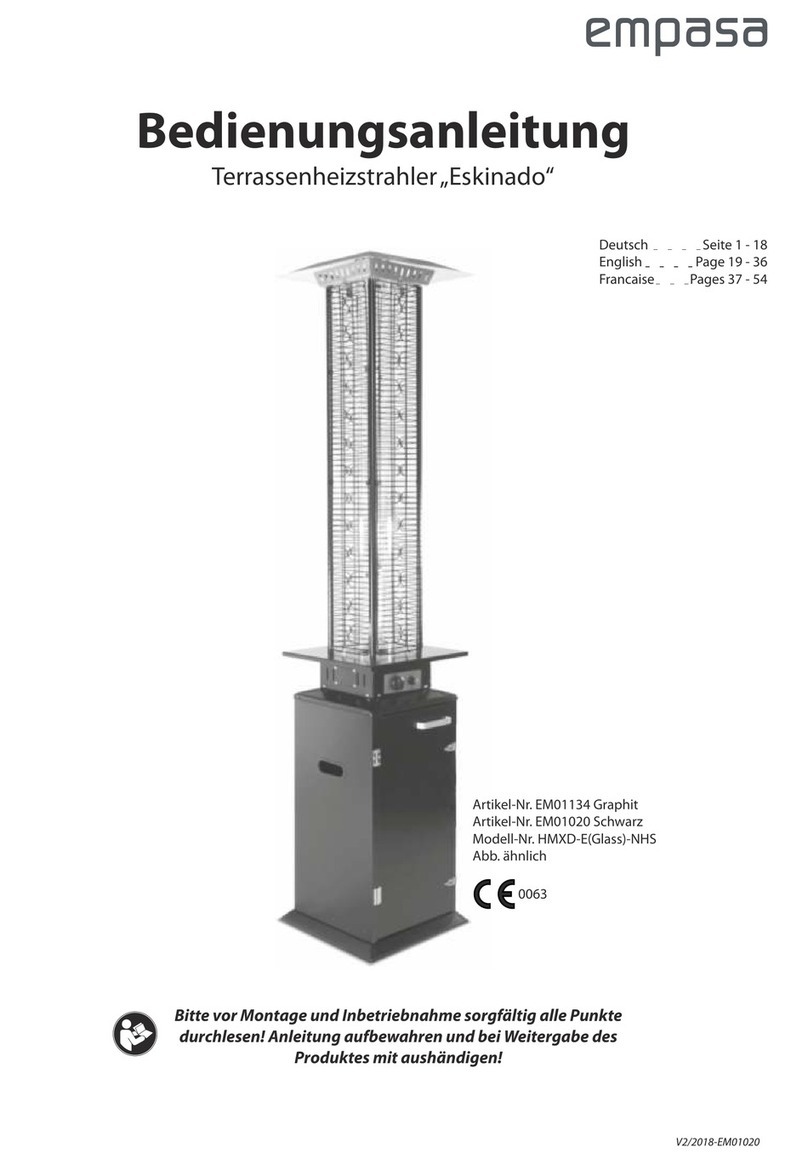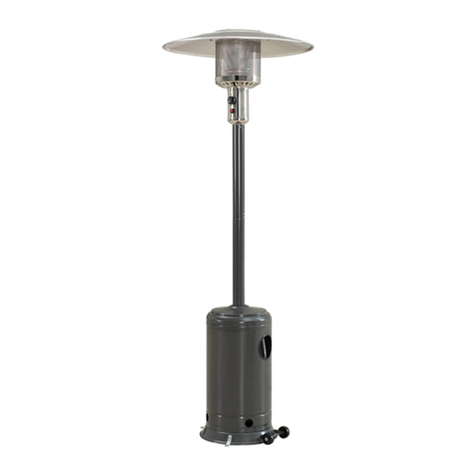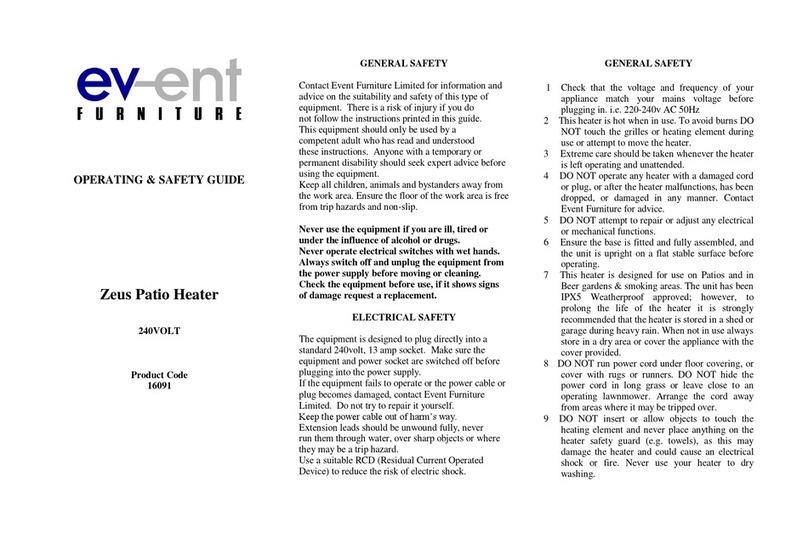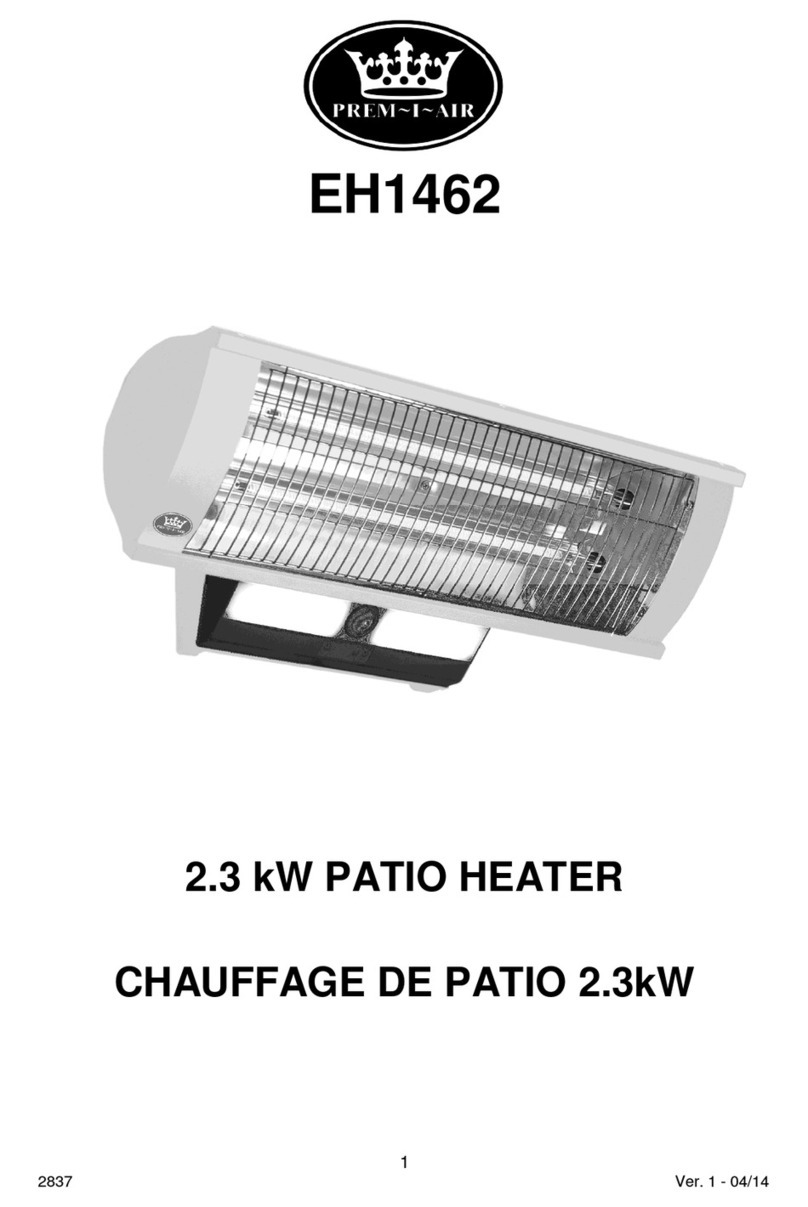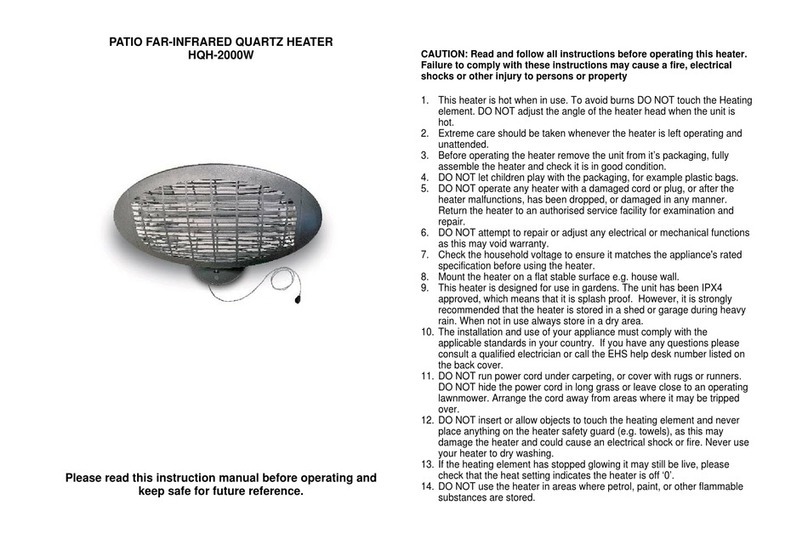5
SAFETY INFORMATION
16. Keep the ventilation opening(s) of the cylinder enclosure free and clear from
debris. Use this appliance in a well-ventilated space only. Do not use it in a building,
garage, or any other enclosed area.
Use this appliance in outdoor areas described below:
(a) With walls on all sides, but at least one permanent opening at ground level and no
overhead cover.
(b) Within a partial enclosure that includes overhead cover and no more than two walls.
These walls may be parallel, or at right angles to each other.
(c) Within a partial enclosure that includes overhead cover and no more than two walls.
The following shall apply:
(i) One wall that is equivalent to at least 25% of the total wall area is completely
open.
(ii) 30% or more in total of the remaining wall area is open and unrestricted.
17.The LP-gas supply cylinder to be used must be:
(a) Constructed and marked in accordance with the Specifications for LP-gas cylinders
of the U.S. Department of Transportation of Dangerous Goods and Commission,
CAN/CSA-B339, as applicable;
(b) Provided with a listed overfilling prevention device; and
(c) Provided with a cylinder connection device compatible with the connection for the
appliance.
18.Disconnect the cylinder when the appliance is not in use.
19.Storage of an appliance indoors is permissible only if the cylinder isdisconnected and
removed from the appliance.
20.Store the cylinder outdoors in a well-ventilated area (not in a building, garage,or other
enclosed area) out of the reach of children.
21.The cylinder used must include a collar to protect the cylinder valve.
22.Do not store a spare LP-gas cylinder under or near this appliance;
23.Never fill the cylinder beyond 80 percent full;
24.Place the dust cap tightly on the cylinder valve outlet whenever the cylinder is not in
use. Install only the type of dust cap on the cylinder valve that is provided with the
cylinder valve. Other types of caps or plugs may result in a propane leak.
25.Inspect the visible portion of the hose before each use of the appliance.
26.More frequent cleaning may be required as necessary. It is imperative that the control
compartment, burners and circulating air passageways of the heater be kept clean.
27.Every part of the heater shall be secure against displacement and shall be
constructed to maintain a fixed relationship between essential parts under normal and
reasonable conditions of handling and usage. Parts not permanently secured shall be
designed so they cannot be incorrectly assembled and cannot be improperly located
or misaligned in removing or replacing during cleaning or other servicing.


